History of Shotokan Karate
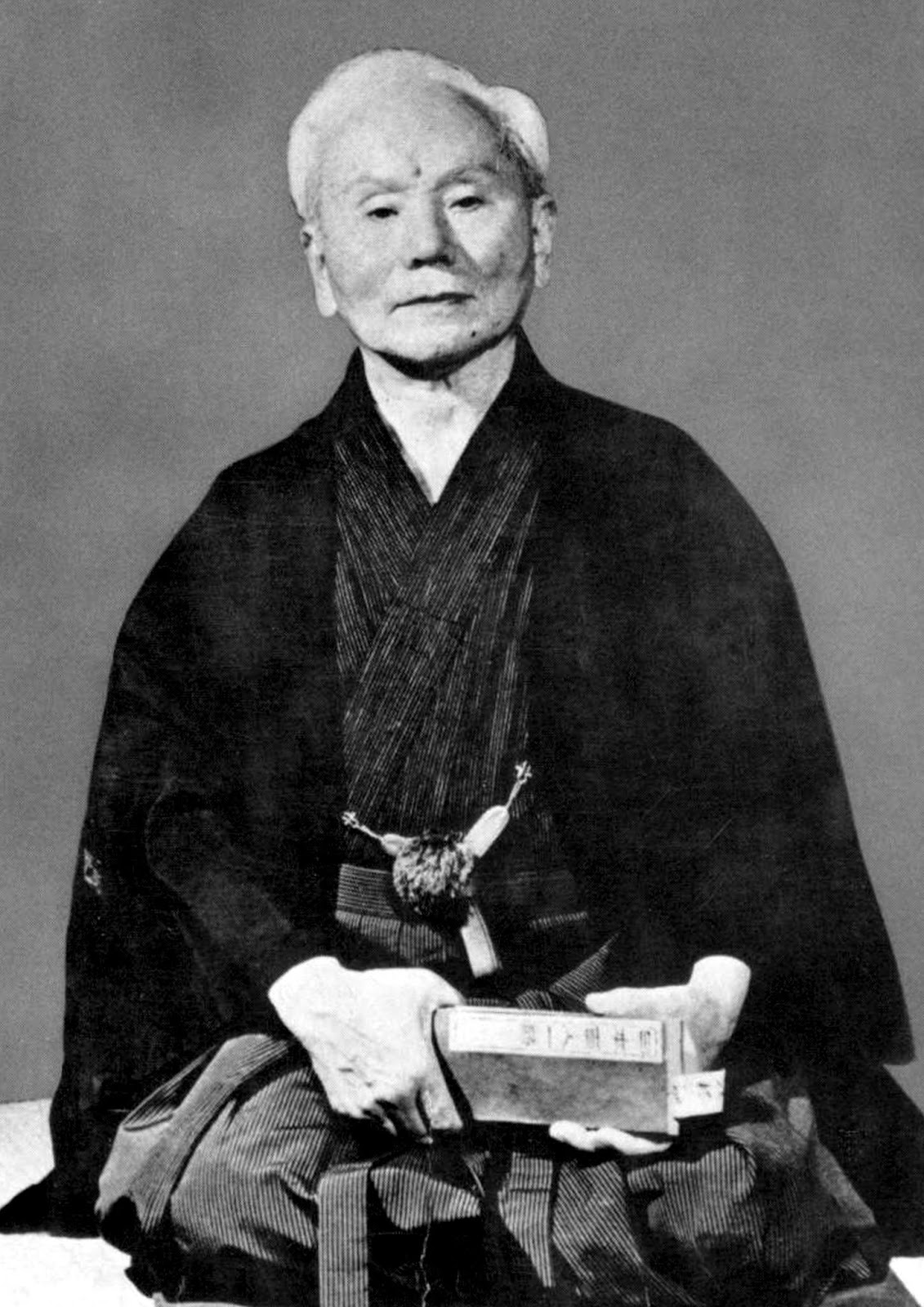
Welcome to the History of Shotokan Karate. Here I am hoping to break this history down to a readable and understandable level. I sincerely hope you enjoy this history.
Origins of Karate
Karate is a martial art with origins on the Ryukyu Islands of Okinawa in the East China Sea. The indigenous fighting arts of Okinawa were combined with martial arts of the surrounding countries. And this included drawing especially on the White Crane style from Fujian, China.
The Okinawan martial art began to take form in the early 1800s. And was known as Toudi (Tang Hand, China Hand) or simply Te (Hand). The earliest practitioners in Okinawa were members of the royal court in service to the Ryukyu king.
These pioneers of karate were responsible for keeping the peace and protecting the royal family. Which regularly tested their technique. Most importantly the training of karate during this period was difficult due to a Japanese occupation of the Ryukyu kingdom. And is where the Japanese banned the possession of weapons and the practice of martial techniques.
Hence as a result, karate practice during this time was often conducted in secret. Often at night, and in secluded areas. Many of the kata we practice today were developed or refined during this time. And this is a very important part of the history of Shotokan Karate.
History of Shotokan Karate: Japanese Karate
History of Shotokan Karate: In 1868, the Meiji restoration overthrew the Shogun in Japan as well as the feudal system of government and many traditional aspects of the Japanese class system. And in addition, the practice of karate was allowed openly and in public, and the art began to spread.
The founder of Shotokan karate, Gichin Funakoshi, was born at this time and began karate training at a young age. Master Funakoshi’s primary teachers were Anko Asato. And Anko Itosu, both members of high society in Okinawa and both formidable karate practitioners. Therefore Anko Itosu became one of the most influential karate-ka in history. And by the impact of his numerous students on spreading and developing the art and thus the History of Shotokan Karate.
Soon Master Funakoshi became a school teacher in Okinawa, and in 1922 traveled to Japan in an effort to spread the art of Karate to a broader audience.
Most of all Funakoshi was tireless in his efforts. Thereby giving demonstrations for the Emperor, starting the first karate clubs at Japanese universities. Plus becoming a full time resident on the Japanese mainland to oversee karate’s development. The Japanese students took to calling their Dojo the Shotokan (Shoto’s Hall), after Master Funakoshi’s pen name, Shoto.
Importantly Master Funakoshi son Gigo had a strong influence on the development of karate during the 1930's. During the struggling for karate to gain acceptance alongside Kendo, Judo, and Aikido. Karate was still seen as a foreign art in some respects, and both Master and son worked hard to gain recognition of their Okinawan art.
Karate Introduced to the World
Most of all as World War II raged from 1939-1945. And this was wreaking devastation on the entire world and on the karate world in particular. Therefore priceless records of the history and heritage of karate were lost during the invasion of Okinawa. And countless Japanese karate-ka lost their lives trying to protect their country. And the devastation across Japan scattered the remaining karate students on the mainland.
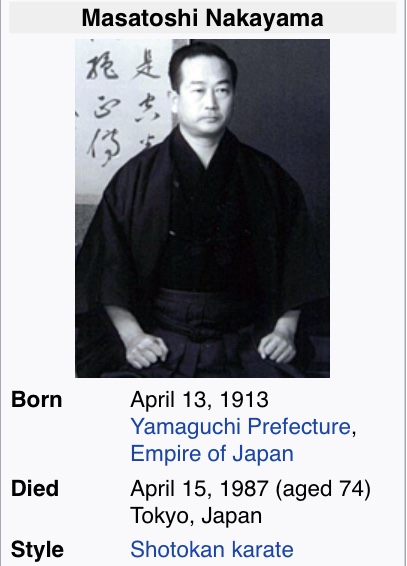
After the dust settled in 1945, one of Master Funakoshi’s top students, Masatoshi Nakayama, began to re-organize the remaining students. And he recovered lost training methods and kata, also formed the Japan Karate Association (JKA) to further Master Funakoshi’s efforts. The JKA began developing rules for karate contests involving competitive displays of kata and kumite in a sporting environment. Importantly these competitions brought karate closer in line with other indigenous Japanese martial arts such as Kendo and judo.
Then, in 1957, Master Funakoshi passed away at age 88. At this time, a dispute between the JKA and Funakoshi’s older students resulted in the first of many political splits in the line of Shotokan karate. Most importantly this is always tragic. Politics is always evil! However the JKA soon began its famous instructor training program. And also began to produce some of the most talented, skilled, and fearsome karate practitioners in the world.
Master Nakayama used the instructor course to send highly trained karate teachers to all corners of the globe. Thus spreading the humble Okinawan art to the global scale. Notable instructors from the JKA training course include Masters Hidetaka Nishiyama, Teruyuki Okazaki, Yutaka Yaguchi, Hirokazu Kanazawa, Keinosuke Enoeda, Takayuki Mikami, Tetsuhiko Asai, and many others.
Most of all these fantastic instructors shaped the world of karate practice during the height of its popularity in the 1960s and 1970s.
The International Shotokan Karate Federation (ISKF)
Master Okazaki was chosen by the JKA to spread Shotokan karate in the USA along with Hidetaka Nishiyama in 1961. Most important is that Master Okazaki established the ISKF in 1977, and his dojo in Philadelphia. And it was designated as the worldwide headquarters.
The ISKF continuously grew and flourished as a member organization of the JKA for many years. Also establishing an Instructor Training Institute in the USA to mirror the JKA training program. When Master Nakayama passed away in 1987, the JKA experienced turmoil. Therefore causing much change over the next two decades. In 2007, the ISKF split from the JKA organization, establishing an independent Shotokan karate organization under Master Okazaki.
The ISKF continues to uphold the traditions and standards of excellence of Master Funakoshi, Master Nakayama, and the original JKA.
Nittany Shotokan Karate-do
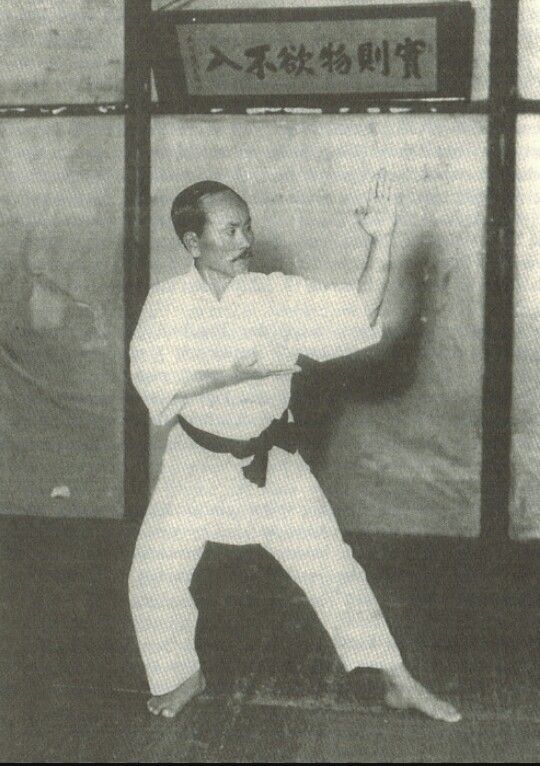
The instructors at Nittany Shotokan both got their start in karate in the early 2000s while training under Sensei J.D. Swanson at the Penn State Shotokan Karate-do club.
The Penn State club is a member of the ISKF, and the Nittany instructors spent training time with many senior ISKF instructors, local ISKF clubs, and with the ISKF Masters: Sensei Okazaki, Sensei Yaguchi, and formerly of the ISKF, Sensei Mikami, Sensei Takashina, and Sensei Koyama.
In 2005, the Penn State Shotokan Karate Club was passed on to Sensei Kim Baran upon the departure of Sensei Swanson. Sensei Kim Baran kept the Penn State Club strong and vibrant until 2011.
Then when irreconcilable differences with the Penn State Club Sports Program caused the Penn State instructors to form the Nittany Shotokan Karate-do Club in downtown State College.
The instructors of Nittany Shotokan Karate-do strive to maintain the strong tradition of Shotokan training that has been passed on by their instructors and karate ancestors.
History of Shotokan Karate Ancient Origins
The art now known as "Shotokan" is derived from the teachings of two masters who lived and worked in Okinawa, and were the teachers of Funakoshi Gichin Sensei. Their names were Itosu Anko, who created the Heian Kata series, and Azato Yasutsune. And he was famous for mastery of the sword, and his fiercely strong grip. These two men were in their time trained by other teachers, and were part of the the thriving karate underground on Okinawa in the mid and late 19th Century.
These men understood that major changes were coming to the world and they saw that in order to survive, karate had to be made public and available to all. The introduction of karate training in the Okinawan school system was the first step toward modernization of an art with ancient roots that can be traced back through China to India.
Much has been written about the ancient history of the martial arts and its ties to Buddhism and India. I will however address this information in a different article. I do understand that all martial art which to link themselves directly to this linage. However it is not realistic to do so. It also becomes overwhelming for the student in study.
Movement is universal and no one art created movement.
Founder Gichin Funakoshi:
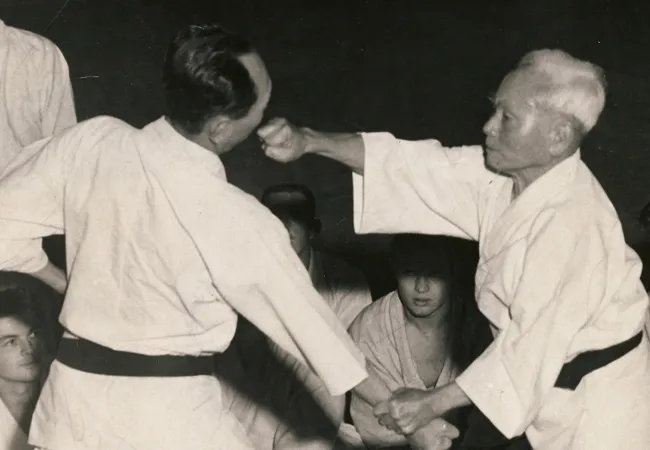
Gichin Funakoshi (船越 義珍, Funakoshi Gichin, November 10, 1868 – April 26, 1957) was the founder of Shotokan karate-do In 1928. Which is perhaps the most widely known style of karate, and he is known as a "father of modern karate".
Following the teachings of Anko Itosu and Anko Asato, he was one of the Okinawan karate masters who introduced karate to the Japanese mainland in 1922, following its earlier introduction by his teacher Itosu. Gichin Funakoshi taught karate at various Japanese universities and became honorary head of the Japan Karate Association upon its establishment in 1949.
Gichin Funakoshi was born on November 10, 1868, the year of the Meiji Restoration, in Shuri, Okinawa, to a Ryūkyūan Pechin. And Funakoshi was born prematurely. His father's name was Gisu.
After entering primary school he became close friends with the son of Ankō Asato, a karate and Jigen-ryūmaster who would soon become his first karate teacher.
Most of all Funakoshi's family was stiffly opposed to the Meiji government's abolition of the Japanese topknot, and this meant that he would be ineligible to pursue his goal of attending medical school (where topknots were banned) despite having passed the entrance examination.
Training
Being trained in both classical Chinese and Japanese philosophies and teachings, Funakoshi became an assistant teacher in Okinawa. During this time, his relations with the Asato family grew and he began nightly travels to the Asato family residence to receive karate instruction from Ankō Asato.
Funakoshi had trained in both of the popular styles of Okinawan karate of the time. These are were Shōrei-ryū and Shōrin-ryū. Shotokan is named after Funakoshi's pen name, Shōtō (松濤), which means "waving pines". Kan means training hall or house, thus Shōtōkan (松濤館) referred to the "house of Shōtō".
This name was coined by Funakoshi's students when they posted a sign above the entrance of the hall at which Funakoshi taught. In addition to being a karate master, Funakoshi was an avid poet and philosopher who would reportedly go for long walks in the forest where he would meditate and write his poetry.
Teaching Shotokan
By the late 1910s, Funakoshi had many students, of which a few were deemed capable of passing on their master's teachings. Continuing his effort to garner widespread interest in Okinawan karate, Funakoshi ventured to mainland Japan in 1917. And again in 1922. In 1922 Funakoshi (aged 53) and Makoto Gima (aged 26) were invited to the Kodokan by Judo Master Jigoro Kano to perform a karate demonstration. It was this demonstration that inevitably made karate popular in the mainland.
In 1930, Funakoshi established an association named Dai-Nihon Karate-do Kenkyukai to promote communication and information exchange among people who study karate-dō. In 1936, Dai-Nippon Karate-do Kenkyukai changed its name to Dai-Nippon Karate-do Shoto-kai. The association is known today as Shotokai, and is the official keeper of Funakoshi's karate heritage.
In 1936, Funakoshi built the first Shōtōkan dojo (training hall) in Tokyo. While on the Japanese mainland, he changed the written characters of karate to mean "empty hand" (空手) instead of "China hand" (唐手) (literally Tang dynasty) to downplay its connection to Chinese boxing. Karate had borrowed many aspects from Chinese boxing. Funakoshi also argued in his autobiography that a philosophical evaluation of the use of "empty" seemed to fit as it implied a way which was not tethered to any other physical object.
Karate
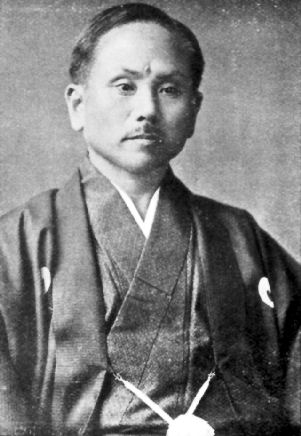
Funakoshi's re-interpretation of the character Kara in karate to mean "empty" (空) rather than "Chinese" (唐) caused some tension with traditionalists back in Okinawa, prompting Funakoshi to remain in Tokyo indefinitely.
In 1949 Funakoshi's students created the Japan Karate Association(JKA), with Funakoshi as the honorary head of the organization. However, in practice this organization was led by Masatoshi Nakayama. The JKA began formalizing Funakoshi's teachings.
Gichin Funakoshi passed away on April 26, 1957
Researched by Sensei Kara Borshuk
Edited by Grand Master Art Mason